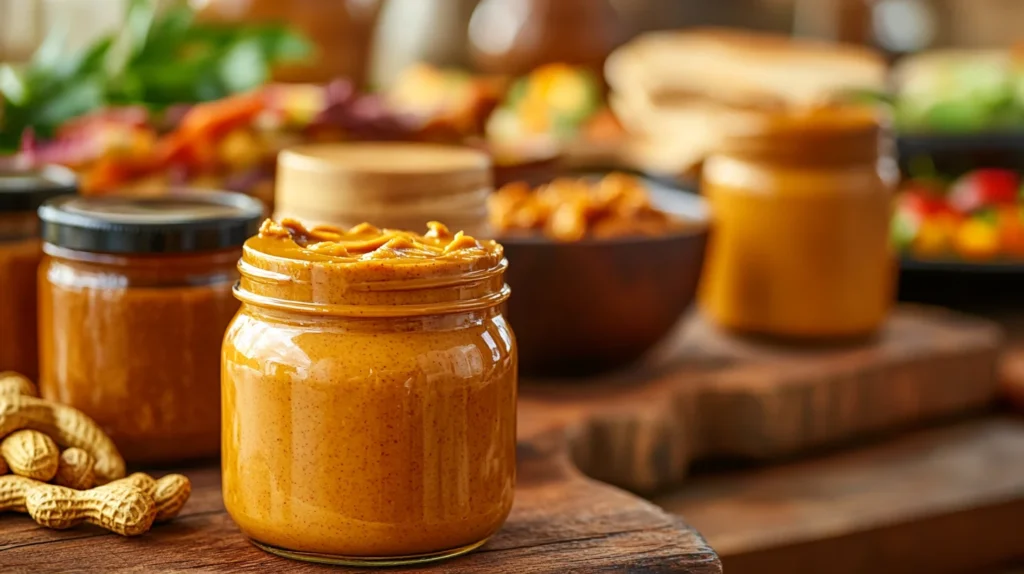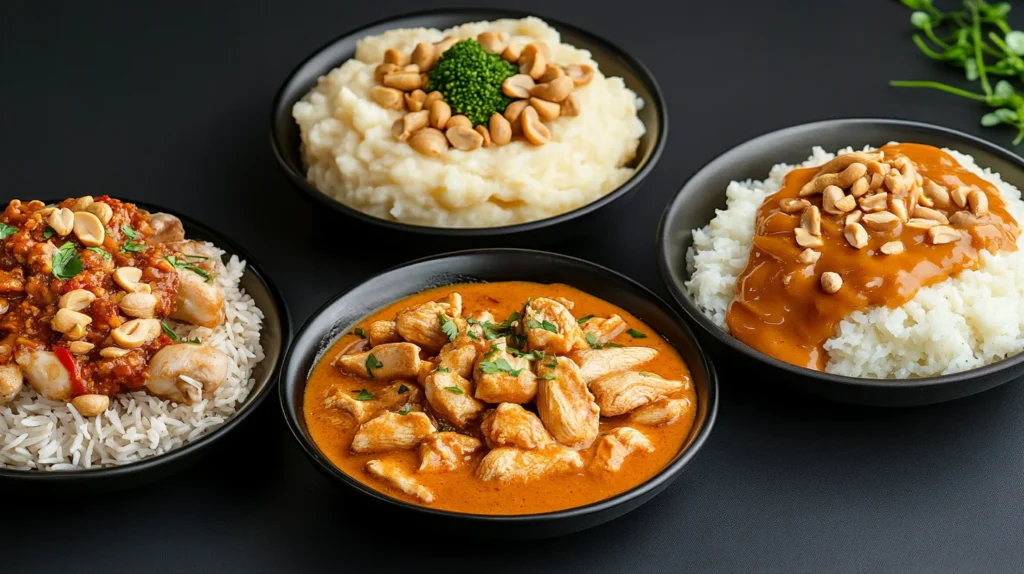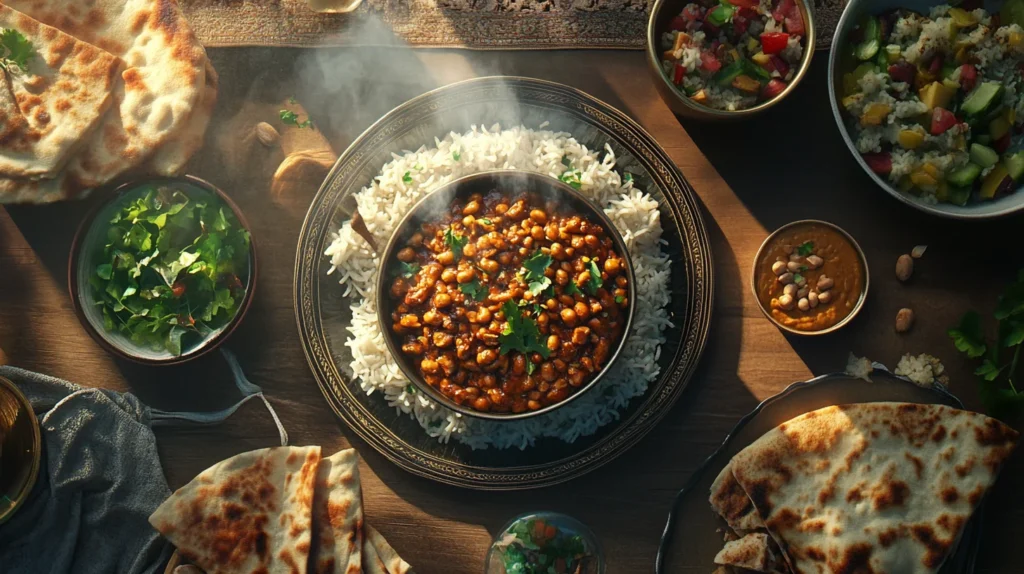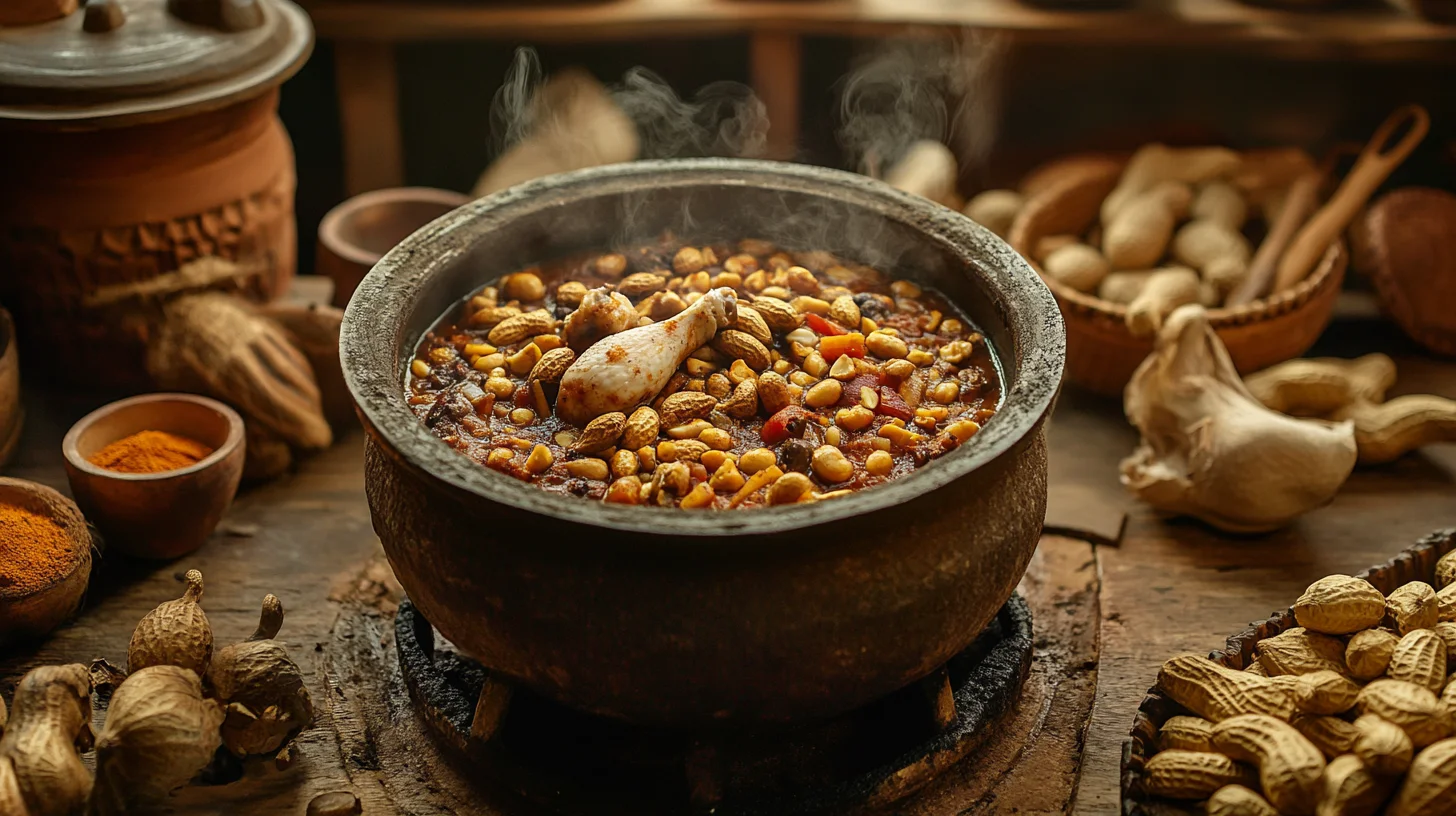Peanut butter chicken is a dish that tantalizes taste buds and bridges culinary traditions across continents. But where did this flavorful creation truly come from? Its origins are steeped in cultural fusion, showcasing the blending of ingredients and cooking techniques from different parts of the world. In this article, we’ll uncover the fascinating history behind peanut butter chicken, explore its global variations, and see how it has become a beloved dish in modern cuisine.
Let’s dive into the intriguing journey of this dish, tracing its origins, highlighting its regional adaptations, and understanding its impact on food culture today.
Table of contents
- The Origins of Peanut Butter Chicken
- Peanut Butter as a Global Ingredient
- Regional Variations of Peanut Butter Chicken
- Cultural Impact and Popularity Today
- FAQs: Popular Questions About Peanut Butter Chicken
- The Evolution of Peanut Butter Chicken Recipes
- Why Peanut Butter Chicken Stands the Test of Time
- Conclusion

The Origins of Peanut Butter Chicken
Exploring the Roots of Peanut Butter Chicken
Peanut butter chicken, like many iconic dishes, doesn’t have a singular point of origin. Instead, it emerges from a delightful blend of traditions. Culinary historians often point to its roots in West African cuisine, where peanuts have been a dietary staple for centuries. Groundnut stews, known locally as maafe or peanut soup, frequently paired proteins like chicken with a rich, peanut-based sauce. Over time, as these culinary practices spread through migration and trade, new variations emerged.
Interestingly, peanut butter itself didn’t originate in Africa but became a vital ingredient in African-inspired dishes. The creamy texture and nutty flavor of peanut butter offered versatility, allowing it to be used in both sweet and savory recipes.
Connection to African Cuisine
Africa’s influence on peanut butter chicken is unmistakable. In countries like Senegal and Nigeria, peanuts (often called groundnuts) have been used in traditional dishes for centuries. These recipes typically feature slow-cooked meats in a thick, spiced peanut sauce. The cultural significance of these dishes extends beyond flavor—they symbolize community, nourishment, and tradition.
However, peanut butter chicken as we know it today likely gained global recognition through adaptations made in Western kitchens. The introduction of store-bought peanut butter provided a convenient shortcut, making it easier for home cooks and chefs to recreate the flavors of traditional peanut stews without grinding peanuts by hand.
Early Mentions in Cookbooks or Recipes
While the exact origin of peanut butter chicken in its modern form is hard to pinpoint, it began appearing in Western cookbooks in the mid-20th century. These recipes often incorporated peanut butter as a quick-and-easy sauce base, blending it with soy sauce, garlic, and ginger for a Southeast Asian-inspired twist. By the 1970s, peanut butter chicken had become a favorite comfort food, particularly in North America and Europe.
The blend of African traditions, Western convenience, and a touch of global fusion firmly places peanut butter chicken as a dish with deep cultural roots and widespread appeal. As we move to the next part, we’ll explore how peanut butter itself became a culinary staple worldwide.

Peanut Butter as a Global Ingredient
History of Peanut Butter
To understand where peanut butter chicken comes from, we first need to trace the history of its star ingredient—peanut butter. While peanuts originated in South America, it was African, Asian, and European culinary practices that helped transform them into peanut butter. Historians believe that early forms of peanut paste were used by the Incas and Aztecs. However, the smooth, spreadable peanut butter we recognize today was popularized in the United States during the late 19th century.
Peanut butter’s global rise can be credited to its versatility and nutrition. By the early 20th century, it had become a pantry staple in North America. This coincided with increased migration and cultural exchange, paving the way for peanut butter to be introduced into a variety of global recipes.
Popularity of Peanut-Based Sauces Globally
Peanut butter found its way into culinary traditions across continents, inspiring recipes that highlight its creamy, nutty goodness. Southeast Asia, in particular, embraced it in dishes like satay sauce—a tangy, spiced peanut-based dip served with grilled meats. Similarly, African cuisine used peanuts in hearty stews that blended sweet, savory, and spicy flavors.
It’s not surprising that peanut butter chicken evolved as a fusion dish. Combining the rich, nutty taste of peanut butter with spices and chicken allowed cooks to create meals that were both comforting and flavorful. By the mid-20th century, this recipe became a culinary staple in Western kitchens, where ingredients like soy sauce, ginger, and garlic added international flair.
The versatility of peanut butter helped solidify its place in modern kitchens, making it a key ingredient in dishes that blend culinary traditions. From Asian stir-fries to African stews, the popularity of peanut butter sauces showcases the power of fusion cuisine.
Regional Variations of Peanut Butter Chicken
Peanut Butter Chicken Across Continents
One of the most fascinating aspects of peanut butter chicken is how it adapts to local tastes. In Africa, groundnut stews feature bold, earthy spices like cumin and coriander, with peanut butter adding a rich, creamy texture. These dishes are often paired with rice, yams, or plantains to create hearty meals.
In Southeast Asia, peanut butter chicken takes on a lighter, tangier profile. Recipes often include lime juice, soy sauce, and chili paste for a balance of sweet, sour, and spicy flavors. This version is typically served with jasmine rice or noodles.
Meanwhile, in Western countries like the United States, peanut butter chicken has become a fusion favorite. Recipes frequently include common pantry staples like honey, garlic, and Worcestershire sauce to cater to Western palates. This reflects how peanut butter chicken evolves based on the ingredients and tastes of different regions.
The Recipe Evolution Through Migration
So, where did peanut butter chicken come from? Its journey is tied to migration and cultural exchange. As African and Asian communities shared their culinary traditions, peanut butter became an accessible substitute for ground peanuts. This allowed the dish to travel and transform, taking on unique characteristics in each new location.
For example, Western adaptations often simplify the recipe, making it quicker to prepare while preserving its rich, savory essence. This evolution highlights how migration and globalization continue to influence the way we cook and enjoy peanut butter chicken today.

Cultural Impact and Popularity Today
Peanut Butter Chicken in Modern Cuisine
Peanut butter chicken has grown beyond its traditional roots to become a global culinary favorite. Its popularity has been fueled by the accessibility of peanut butter, a staple ingredient found in almost every kitchen. Social media platforms and food blogs have played a huge role in spreading recipes, making this dish even more beloved. If you’re curious about modern peanut butter chicken recipes, check out the detailed chicken with peanut butter recipe on RecipesOlly for inspiration.
Home cooks often add their own twists to this dish, incorporating local spices, vegetables, or even alternative proteins like tofu. This adaptability ensures that peanut butter chicken remains relevant in diverse kitchens. Moreover, its rich, comforting flavor makes it a perfect dish for family meals and special occasions alike.
A Dish for the Ages
The appeal of peanut butter chicken lies in its ability to evoke both nostalgia and excitement. Many people recall childhood memories of enjoying peanut-flavored dishes, while others are drawn to its exotic, fusion-inspired flavors. Restaurants have also embraced this dish, adding their unique spins and pairing it with creative sides.
So, where did peanut butter chicken come from? Its journey from traditional African stews to global tables reflects a story of cultural exchange, innovation, and enduring appeal. The modern versions of this dish symbolize the interconnectedness of food traditions, making it a timeless addition to menus worldwide.
FAQs: Popular Questions About Peanut Butter Chicken
Is It Truly African or Asian?
The roots of this dish are deeply tied to African culinary traditions, particularly in the use of peanuts in stews. However, Southeast Asian influences—like satay sauce—have also shaped the modern recipe. This blend of African and Asian elements makes it a true fusion dish.
What Makes Peanut Butter Chicken Unique?
Peanut butter chicken’s creamy, nutty sauce is its standout feature. By combining sweet, savory, and spicy flavors, it creates a rich and satisfying dish. The versatility of the recipe allows for countless variations, making it unique to each culture or cook who prepares it.
Can It Be Made Vegan or Gluten-Free?
Absolutely! By substituting tofu or plant-based protein for chicken and ensuring that all sauce ingredients are gluten-free, this dish can easily be adapted to meet dietary preferences. Peanut butter itself is naturally vegan, making it a great base for plant-forward versions of this classic dish.
For more delicious recipes, check out chicken with peanut butter recipe on RecipesOlly. It’s a great way to experiment with this versatile and flavorful dish!
The Evolution of Peanut Butter Chicken Recipes
Influences of Migration and Cultural Exchange
This dish has traveled far and wide, evolving with each step of its journey. Its foundation in African cuisine, particularly in groundnut stews, laid the groundwork for a recipe that would adapt to new flavors and techniques as it spread. The question, “Where did it come from?” can’t be answered without acknowledging the role of migration and cultural exchange in its development.
As African communities moved across continents, they brought their culinary traditions with them. These recipes mingled with local ingredients, resulting in fresh takes on the classic peanut-and-protein pairing. For example, Southeast Asian spices like lemongrass and chili found their way into these recipes, creating exciting new flavor profiles.
Modern-Day Adaptations
Today, This recipes reflect a melting pot of influences. Western kitchens often simplify the recipe with pantry staples like Worcestershire sauce and honey, making it more accessible for home cooks. Meanwhile, chefs around the globe add their unique spins, such as using smoked paprika or coconut milk for a twist.
This adaptability ensures that peanut butter chicken continues to thrive, appealing to both traditionalists and adventurous foodies. Its evolution highlights the way food connects people, bridging cultures and bringing the world’s flavors to our plates.
Why Peanut Butter Chicken Stands the Test of Time
The Universal Appeal
What makes it a lasting favorite? Its blend of creamy, nutty, and savory flavors appeals to almost everyone. The richness of the peanut butter, balanced by spices and sweetness, creates a comforting dish that’s both nostalgic and exciting. Whether you’re trying it for the first time or revisiting an old favorite, its flavor is hard to forget.
Another reason for its enduring popularity is its versatility. It works just as well for a weeknight dinner as it does for a fancy gathering. You can serve it with rice, noodles, or flatbread, and it adapts effortlessly to dietary needs with vegan and gluten-free options.
Reflecting on Its Origins
So, where did it come from? Its journey from African stews to global kitchens shows the power of culinary traditions and their ability to adapt and inspire. This dish isn’t just a meal—it’s a story of how food can connect us across time and cultures. It continues to bring people together, making it a timeless treasure in the world of cuisine.
Conclusion
This dish is much more than a delicious meal—it’s a celebration of cultural exchange and culinary evolution. From its roots in African groundnut stews to its adaptations in Southeast Asia and the West, it showcases how food transcends borders and adapts to new tastes and traditions.
By answering the question, “Where did it come from?”, we uncover a story of migration, innovation, and connection. Its rich, nutty flavor and versatile nature make it a dish that appeals to people from all walks of life. Whether it’s enjoyed as a traditional stew or a modern fusion, it continues to stand the test of time.
As you savor your next bite, take a moment to appreciate the journey this dish has taken—across continents, cultures, and generations. It’s a true testament to the power of food to bring people together, one flavorful plate at a time.

